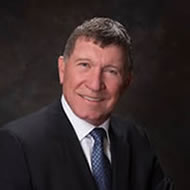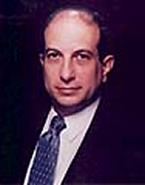This paper presents a method for measuring economic damages in wrongful termination cases. Such cases present the damages expert with a problem since the available studies of earnings recovery after a job loss are based on a limited time period after a job loss and many workers never catch-up to the previous earnings level. A two-step approach is offered. First, the expert uses appropriate available empirical evidence to develop a typical earnings catch-up period. Second, the expert gathers information about case factors affecting the duration of the period to earnings catch-up. Using these factors, the expert modifies the base time period to develop a reasonable range of years for earnings catch-up. The ultimate choice of lost earnings is left for the court to decide, given the range presented by the expert. Cases directly or indirectly supporting this method are presented.
I. Introduction
Forensic economists who assess economic damages in civil litigation usually build a damages model based on economic theory, empirical studies, and prior cases. What is a forensic economist to do, however, when prior studies generally find earnings losses persist (i.e., earnings do not "catch-up" to the pre-job loss earnings level) after an involuntary job loss, yet the courts say the wronged party should be made "whole"? We begin with a basic framework in which:
- The role of the expert is to assist the trier of fact.
- The plaintiff has a duty to mitigate his loss after termination.
- If liability is established, an accepted remedy is to make the plaintiff "whole." This means damages are what earnings would have been had the termination not happened, less mitigation earnings.
- The expert should use existing theoretical and empirical studies, make reasonable assumptions, and avoid speculation in assessing economic damages.
To this framework of analysis, we add the observation that it is preferable to be approximately
correct than precisely wrong when assessing economic damages.
To make the injured party whole in a wrongful termination case, the end point in measuring earnings loss is not when the dismissed person gets another job, but when the dismissed person gets a job that pays what they would have gotten had they not been dismissed. Finding another job fits with the need to mitigate losses. If the individual immediately finds a new job that meets or exceeds the old job in pay, then there are no damages. If the new job fails to match the prior job's pay level then there are at the very least transitional losses to be compensated, assuming the search for new employment has been dutiful toward mitigating loss.
Fulfilling the duty to mitigate damages is a thorny issue. Accepting a low paying job offer immediately might lead to a loss in bargaining power regarding a future job, so refusal of a job offer is not necessarily a sign of malingering. Taking a job in a much different occupation may cause erosion of job skills, as would occur when a highly trained technician becomes employed for long duration performing tasks commonly associated with unskilled labor. Jobs sited far from one's family residence have associated with them extraordinary costs, so rejection of such an employment opportunity is not tantamount to shirking. Such factors as have been mentioned warrant consideration by judge and jury, even if the forensic economist does not present expert opinion on the issue of mitigation of damages.
The next section reviews the literature most relevant to determining the duration of job loss after wrongful termination and estimating the time frame to obtaining earnings at the pre-termination level. An approach to calculating damages is proposed and then illustrated in successive sections. Crucial to the analysis is the choice of the number of years to full mitigation, addressed specifically in its own section. The paper concludes with a brief summary.
II. Prior Studies
. . .Continue to read rest of article (PDF).
Stanley P. Stephenson, Ph.D. Economics, has provided Economic Litigation services in more than 300 cases. His experience includes Business Valuations, Economic and Quantitative Analysis and Market Assessments.
©Copyright - All Rights Reserved
DO NOT REPRODUCE WITHOUT WRITTEN PERMISSION BY AUTHOR.











